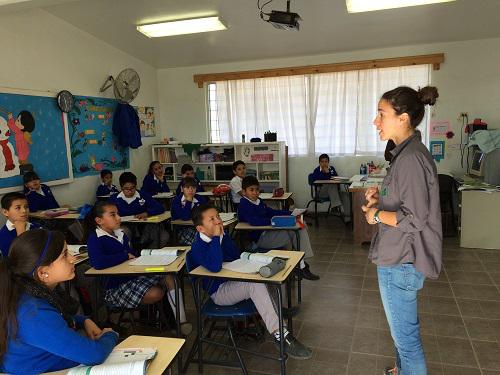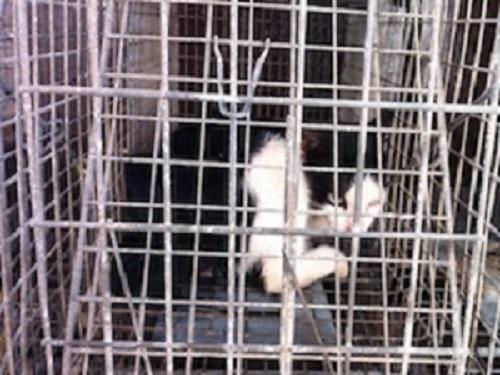Luz Aura de Wit
Assess the public health threats of invasive cats in Cedros Island in order to provide local support and logistical leverage for the conservation of Craverri’s Murrelet in the form of cat eradication.

Luz at Cedros Primary School.
Cats are one of the most common introduced species found on islands. Seabirds use islands to breed and rear their young. Seabirds are the most threatened group of marine animals, and cat predation accounts for one of the greatest threats for these species. Cats are the only definitive host for toxoplasmosis, a disease that can cause severe ocular and neurological health problems in humans. Toxoplasmosis has especially great impacts in marginalized communities with limited access to healthcare services, and treatment may be challenging to administer to remote island populations. On islands where immigration of introduced cats is preventable, the most effective control of toxoplasmosis may be through eradication of introduced cats.

Feral cat on Cedros Island.
I will measure and compare the prevalence of toxoplasmosis in Cedros and Natividad islands, located off the Pacific Coast of Baja California, Mexico. These islands are 15 km apart, have similar ecosystems, and people from both islands have similar cultural and economic backgrounds. However, given that cats were eradicated from Natividad 15 years ago, these islands provide an ideal setting for a real-time retrospective study. We will also measure the prevalence of toxoplasmosis in the closest mainland city, Guerrero Negro, to account for external sources of infection. This study will allow me to directly quantify the role of introduced cats as a source of toxoplasmosis for inhabitants of Cedros Island.
Cedros Island harbors a breeding colony of Craverri’s Murrelet (Synthliboramphus craveri), a seabird species that is listed as vulnerable by the IUCN, and which one of the main threats is cat predation. Cat eradication has been proposed in Cedros as a strategy to conserve the Craverri’s Murrelet colony. However, there are social and cultural barriers that have impeded further implementation of these conservation measures.
This project is designed to create synergistic interventions that benefit biodiversity and human health, and a stepping-stone for integrating disease alleviation in cost-benefit assessments of cat eradications. By comparing the prevalence of toxoplasmosis among inhabitants of Cedros and Natividad we will inform Cedros inhabitants about the threats that cats impose to their well-being, and assess whether cat eradication can eliminate the local source of infection. Additionally, we expect that results from this study will break social and cultural barriers inherent to cat eradications, while gaining support and facilitation from local people for conservation efforts in the form of cat eradication.